6 Best Prime Lenses for Nikon Cameras in 2020
Most of Nikon’s recently-released lenses have zoom capabilities, but that doesn’t mean that primes are any less desirable. There’s no pressure for them to work well on multiple focal lengths, so primes excel at image quality while often being smaller and lighter than zoom lenses. It’s also easier to manufacture primes with bright apertures, letting you get better results in low light and create background blur everyone will fall in love with.
Here are the six best prime lenses for Nikon cameras you can get today. We cover everything from wide-angle to telephoto & between, so you’re sure to find a new favorite whichever type of photography you prefer. Get to know each of them in our in-depth reviews and enrich your lens collection with another worthy addition.
| Budget |
|---|
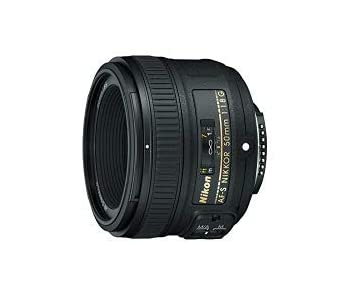 |
| Nikon AF-S Nikkor 50mm f/1.8G |
| 4.4/5.0 |
| Type: Standard prime |
| Focal length: 50mm |
| Pleasing bokeh & little distortion. |
| Check Amazon |
| Best Value |
|---|
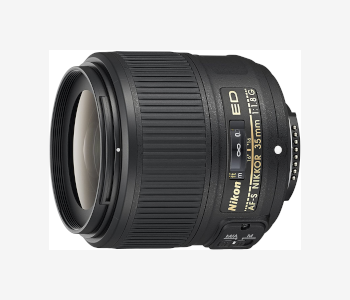 |
| Nikon AF-S NIKKOR 35mm f/1.8G ED |
| 4.6/5.0 |
| Type: Standard prime |
| Focal length: 35mm |
| Outstanding sharpness and small form factor. |
| Check Amazon |
| Top Pick |
|---|
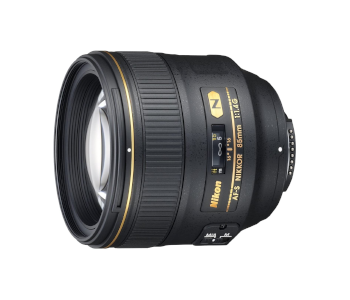 |
| Nikon AF-S NIKKOR 85mm f/1.4G |
| 4.8/5.0 |
| Type: Portrait prime |
| Focal length: 85mm |
| No distortion, fantastic blur & bokeh. |
| Check B&H |
Prime Lenses for Nikon Cameras Comparison Table
| Image | Product | Overall Rating | Image quality | Build quality | Versatility | Price |
|---|---|---|---|---|---|---|
 | Nikon AF-S NIKKOR 85mm f/1.4G | 4.8 | 4.9 | 4.7 | 4.7 | Check Price |
 | Nikon AF-S NIKKOR 35mm f/1.8G ED | 4.6 | 4.6 | 4.5 | 4.7 | Check Price |
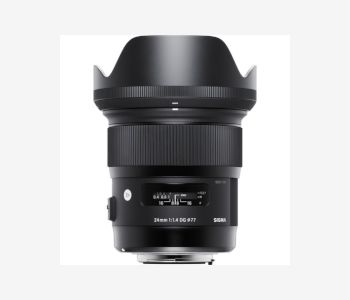 | Sigma 24mm f/1.4 DG HSM Art | 4.6 | 4.7 | 4.6 | 4.6 | Check Price |
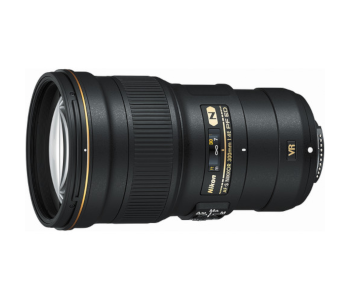 | Nikon AF-S NIKKOR 300mm f/4E PF ED VR | 4.5 | 4.4 | 4.5 | 4.6 | Check Price |
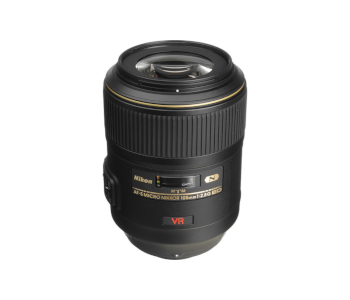 | Nikon AF-S VR Micro-NIKKOR 105mm f/2.8G IF-ED | 4.5 | 4.7 | 4.5 | 4.4 | Check Price |
 | Nikon AF-S Nikkor 50mm f/1.8G | 4.4 | 4.3 | 4.3 | 4.5 | Check Price |
1. Best Overall – Nikon AF-S NIKKOR 85mm f/1.4G
Editor’s Rating: 4.8/5
Portrait photographers in search of jaw-dropping bokeh and tack-sharp performance needn’t look further than the AF-S NIKKOR 85mm f/1.4G. Its price is nothing to sneeze at, but you’re getting world-class build & image quality alike. It’s silent, fast, free from distortion, and handles well.
Overview of Features
The AF-S NIKKOR 85mm f/1.4G is relatively small for a prime with an aperture as wide as this, especially if you compare it to models by rival manufacturers like Canon. Ten elements in nine groups are all that’s needed for its excellent performance. Coupled with a polycarbonate body, this keeps the lens’s weight down while having no adverse impact on performance. Nikon doesn’t explicitly state that it is weather-sealed. However, there’s a rubber gasket on its metal mount that ensures you can use the lens in inclement weather without compromising high-end cameras.
A Silent Wave Motor provides accurate focus that’s quiet enough for use in video shooting. Its speed is great for a portrait prime, and you should have no trouble capturing sharp details on subjects’ faces even in unforgiving light. Switching to manual is an option, or you can make slight corrections to the autofocus as manual override is supported. The ring is broad and grippy, making operation feel intuitive and smooth.
We were impressed with the AF-S NIKKOR 85mm f/1.4G’s sharpness. A lens rarely remains usable throughout its aperture range, and this one remains sharp enough even at f/16. Speaking of sharpness, the picture is uniformly detailed regardless of f-stop. Yes, even at f/1.4! Quality improves steadily until it peaks at f/8, only to dip slightly due to diffraction afterward.
You might think that sharpness is the AF-S NIKKOR 85mm f/1.4G’s best feature, but those honors go to blur. Whether foreground or background, the lens delivers exceptional blur quality accompanied by well-defined and creamy bokeh. Nano Crystal Coat keeps flare & ghosting in check. At the same time, the lens’s superior optics make it free from distortion with minimum chromatic aberration at high apertures.
What We Didn’t Like
The AF-S NIKKOR 85mm f/1.4G suffers from strong vignetting at f/1.4. It measures 4.5 stops of light falloff uncorrected, which is too severe even if you’re going for an artistic look. The lens doesn’t have optical image stabilization, so you’ll want to use it with a tripod.
| Tech Specs |
|---|
| Dimensions: 3.4 x 3.4 x 3.1” |
| Weight: 1.3 lbs |
| Type: prime |
| Focal length: 85mm |
| Maximum aperture: f/1.4 |
| Minimum aperture: f/16 |
| Minimum focus distance: 2.8’ |
| Angle of view: 28° 30′ |
| Image stabilization: No |
| Pros |
|---|
| Exceptional uniform sharpness at any aperture |
| No distortion |
| Fantastic blur & bokeh |
| Excellent build quality |
| Cons |
|---|
| No image stabilization |
| Strong vignetting at f/1.4 |
2. Best Value – Nikon AF-S NIKKOR 35mm f/1.8G ED
Editor’s Rating: 4.6/5
Primes such as the AF-S NIKKOR 35mm f/1.8G ED don’t get enough recognition. It’s a shame since 35mm is a great middle-ground for shooters interested in ambient portraits, landscapes, and urban photography. It’s as fast as Nikon’s lens, and you can even use it for astrophotography. The lens is portable, commendably sharp, and works well on both full-frame & DX Nikon cameras.
Overview of Features
The AF-S NIKKOR 35mm f/1.8G ED is a light and compact lens that feels most at home on Nikon’s smaller DSLRs. It’s long enough to be comfortably supported with your left hand and doesn’t move while focusing. Its build quality is a step above what we’d consider acceptable for the price range. The barrel is solid plastic, and a gasket keeps dust out of your camera. One of its elements is of the Extra Dispersion variety, which you’d expect on high-end Nikon glass only.
Autofocus is among the AF-S NIKKOR 35mm f/1.8G ED’s best features. It’s noticeably faster than the portrait prime above, even though the motor isn’t necessarily more powerful. It works as quietly as our overall winner and has little trouble adapting to nighttime conditions. The only switch on the lens’s side toggles between manual and autofocus with manual override. There’s no image stabilization, but that’s to be expected, given the focal length.
Wide-open, the AF-S NIKKOR 35mm f/1.8G ED is already commendably sharp. It’s not quite as uniform as our overall winner, but the difference between corner & central performance is slight. Stepping down sees the center getting noticeably sharper while the rest of the image gets a modest increase. The gap closes again once you hit f/5.6, while the overall performance peaks at f/8.
There’s some barrel distortion that doesn’t exceed values uncommon for 35mm primes. Bokeh looks nice at high apertures, and foreground blur is excellent. Lower apertures introduce edges on bokeh balls, so avoid them if possible. Flare resistance is admirable, and there’s little lateral chromatic aberration.
What’s Bad About It?
The AF-S NIKKOR 35mm f/1.8G ED is another lens with pronounced vignetting. It’s not as severe as that on the portrait prime, but you’ll still need to correct for it either by stepping down or using Lightroom. Longitudinal CA is another issue at f/1.8, causing highlights towards the edges to display magenta and cyan halos. This phenomenon is harder to correct than ordinary CA, so plan ahead when framing your shots.
| Tech Specs |
|---|
| Dimensions: 2.8 x 2.8 x 2.8” |
| Weight: 10. 8 oz |
| Type: Standard prime |
| Focal length: 35mm |
| Maximum aperture: f/1.8 |
| Minimum aperture: f/16 |
| Minimum focus distance: 9.8” |
| Angle of view: 63° |
| Image stabilization: No |
| Pros |
|---|
| Excellent value for the money |
| Outstanding sharpness |
| Small form factor |
| Fast autofocus |
| Cons |
|---|
| Some vignetting and pronounced LoCA at f1.4 |
3. Sigma 24mm f/1.4 DG HSM Art
Editor’s Rating: 4.6/5
The 24mm f/1.4 DG HSM Art proves yet again that Sigma is deservedly counted among the world’s best third-party lens manufacturers. It’s a capable wide-angle lens with a wickedly sharp center, solid optics, and excellent build quality. Best of all, it comes in at half the price of Nikon’s original while sacrificing almost nothing in quality and performance.
Overview of Features
Here we have another lens that’s beefier than you’d expect for its type. Understandable, since Sigma crammed 15 elements into it, several of which are of the dispersion and aspherical kind. The barrel is made from metal, while the supplied petal-shaped hood is plastic. There’s a focusing distance scale on one side and an A denoting the premium Art line on the other.
The 24mm f/1.4 DG HSM Art’s autofocus is a mixed bag out of the box. It performs reasonably quickly and is quiet enough for making movies thanks to the Hyper-Sonic Motor. On the other hand, accuracy isn’t its strong suit. The lens has trouble obtaining accurate focus at long distances. Fortunately, it turns out that this issue only applies to certain cameras and can be corrected by calibrating the lens using Sigma’s USB dock. The AF issues go away once you calibrate it.
There’s a visible disparity between central and corner sharpness at f/1.4 as the former is excellent while the latter is merely good. Edges & corners don’t hit their stride until f/2.8 but catch up quickly afterward. The lens’s peak performance is at f/5.6. Feel free to step all the way down, though, as diffraction doesn’t have a severe impact on image quality even at f/16.
We were pleasantly surprised by the 24mm f/1.4 DG HSM Art’s lack of barrel distortion, which is unheard of for wide-angle lenses! It also performs admirably when shooting into the sun and manages to keep chromatic aberration under one pixel at its worst. There’s no image stabilization, but that’s to be expected given its application.
Are There Drawbacks?
The vignetting curse continues as the 24mm f/1.4 DG HSM Art is the third lens on review to exhibit it. Light falloff is strongest at f/1.4, reaching an undesirable 3.5 stops. Images become uniformly bright at f/2.8. Bokeh quality is hit and miss. It comes out smooth if your subjects are far away but can appear harsh and nervous as you approach the minimum focusing distance.
| Tech Specs |
|---|
| Dimensions: 3.4 x 3.4 x 3.6” |
| Weight: 1.5 lbs |
| Type: Wide-angle prime |
| Focal length: 28mm |
| Maximum aperture: f/1.4 |
| Minimum aperture: f/16 |
| Minimum focus distance: 9.8” |
| Angle of view: 84.1° |
| Image stabilization: No |
| Pros |
|---|
| Cheaper than Nikon’s lens while maintaining a similar performance |
| Excellent build quality |
| No distortion |
| Great for shooting in sunny weather |
| Cons |
|---|
| Some vignetting when wide open |
| Inconsistent bokeh quality |
4. Nikon AF-S NIKKOR 300mm f/4E PF ED VR
Editor’s Rating: 4.5/5
Telephoto primes are rare nowadays as sports & wildlife are the ideal subjects for lenses of varying focal lengths. However, that doesn’t mean that the available ones are inferior. The AF-S NIKKOR 300mm f/4E PF ED VR offers a host of appealing features like superb image stabilization, excellent overall optics, and a surprisingly compact build. Your wallet might take a hit, but the results speak for themselves.
Overview of Features
It’s hard to believe that you’re holding a prime with a focal length of 300mm when you first lay your eyes on this lens. The AF-S NIKKOR 300mm f/4E PF ED VR is impressively small and reasonably light for its caliber, so covering a game won’t be as strenuous as with competing lenses. You can thank a new Phase Fresnel element that cuts down on the glass needed to achieve its optical excellence.
Autofocus is snappy and silent, as befits a telephoto lens. You can speed it up further by using the focus limiter and change its behavior in three ways. Manual focus is available at any time but comes with a slight delay if the lens is set to A/M so you don’t upset it by accidentally turning the ring. Vibration Reduction is outstanding as it provides 4.5 stops of support. There were reports of inconsistent stabilization results with early production units, but a firmware update has since brought image stabilization to peak performance.
You have the freedom to choose whichever aperture suits your current situation best since edge & corner performance is barely affected by changes. Central sharpness perks up at f/5.6 and f/8, but it’s commendable to begin with and benefits only moderately from stepping down.
The AF-S NIKKOR 300mm f/4E PF ED VR is finally a lens with no serious vignetting issues as there’s less than a stop of light falloff at f/4. It exhibits mild pincushion distortion unlikely to be noticed in real-world scenarios. There isn’t a hint of LoCA, while you can correct for the lateral kind in-camera without much hassle. Bokeh is round and even in the center and takes on a cat’s eye shape towards the edges.
What We Didn’t Like
The AF-S NIKKOR 300mm f/4E PF ED VR is an expensive lens. To add insult to injury, it doesn’t come with a tripod collar. The one Nikon sells for it isn’t stable either, so you’re better off with a third-party alternative. You should avoid shooting into the light with this lens as the Fresnel element drastically increases ghosting and veiling flare in images. Even dimmer light sources can give off halos, so frame your shots carefully.
| Tech Specs |
|---|
| Dimensions: 3.5 x 3.5 x 5.8” |
| Weight: 1.7 lbs |
| Type: Telephoto prime |
| Focal length: 28mm |
| Maximum aperture: f/4 |
| Minimum aperture: f/32 |
| Minimum focus distance: 4.6′ |
| Angle of view: 8° 10′ |
| Image stabilization: Yes |
| Pros |
|---|
| Exceptionally compact for its focal length |
| Consistent sharpness across the board |
| Minimal distortion and chromatic aberration |
| Outstanding image stabilization |
| Cons |
|---|
| Expensive & doesn’t come with lens hood |
| Pronounced veiling flare and light halos due to Fresnel element |
5. Nikon AF-S VR Micro-NIKKOR 105mm f/2.8G IF-ED
Editor’s Rating: 4.5/5
The AF-S VR Micro-NIKKOR 105mm f/2.8G IF-ED is the Holy Grail if you’re a Nikon shooter interested in macro photography. It’s among the sharpest lenses the company has ever made, boasts superb optics, and is built to last. The price has even gone down in recent years, so it’s more in-line with cheaper alternatives.
Overview of Features
Most lenses on our list are either unusually small or large for their respective categories. The 105mm f/2.8G IF-ED falls under the latter. It’s a heavy lens with a large front element built from a blend of metal & polycarbonate materials for maximum durability. It can achieve 1:1 magnification without outwardly moving or extending the barrel! This lets you attach ND filters and get close to subjects without scaring them off.
The 105mm f/2.8G IF-ED’s autofocus is consistently silent, so you can use it to make documentaries about bugs and other small, skittish creatures. It does hunt in low light, but you can help by engaging the focus limiter. Switching to manual allows for minute adjustments as the ring is responsive and easy to grip. Vibration Reduction provides four stops of image stabilization and is as useful for portraits as for macro subjects.
It’s hard to overstate how good the 105mm f/2.8G IF-ED’s sharpness is. A wickedly sharp center is a must for macro lenses. Still, we were most impressed with the corners and edges as they’re negligibly softer. All values improve markedly before peaking at f/5.6 with record-breaking corner sharpness. The lens remains usable until f/16, but diffraction starts drastically affecting quality after that.
You’d expect the 105mm f/2.8G IF-ED to offer wonderful-looking bokeh, and it doesn’t disappoint. Barrel distortion is academic, and chromatic aberration appears only in extreme examples of high contrast scenes. The back-most glass element is treated with Nano Crystal Coating. Coupled with a deep hood, this gives the lens superb glare resistance.
What’s Bad About It?
The 105mm f/2.8G IF-ED needs better quality control as optical properties can vary noticeably from sample to sample. For example, you might get one with worse vignetting or more CA issues than the norm.
| Tech Specs |
|---|
| Dimensions: 3.3 x 3.3 x 4.5” |
| Weight: 1.6 lbs |
| Type: 105mm |
| Focal length: f/2.8 |
| Maximum aperture: f/32 |
| Minimum aperture: 1’ |
| Minimum focus distance: 23° 20′ |
| Angle of view: Yes |
| Image stabilization: x |
| Pros |
|---|
| World-class sharpness from corner to corner |
| No distortion or chromatic aberration |
| Focuses internally |
| Capable of true 1:1 magnification |
| Cons |
|---|
| Inconsistent quality control |
6. Best Budget Option – Nikon AF-S Nikkor 50mm f/1.8G
Editor’s Rating: 4.4/5
Our budget pick is also one of Nikon’s all-time bestsellers, the AF-S Nikkor 50mm f/1.8G. The lens is an attractive option for full-frame and APS-C shooters alike since it can be used for normal shots on the former and as a portrait prime on the latter. It’s a lens no Nikon photographer should go without and a wonderful choice as your first purchase after exploring everything your kit lens can do.
Overview of Features
The AF-S Nikkor 50mm f/1.8G is a tiny pancake lens that adds barely any weight to full-frame cameras. The build quality doesn’t betray its price as the barrel is made from solid plastic. Its metal mount is sealed, adding another layer of protection from moisture and dust. The front element is deeply recessed and protected from flaring, especially if you add the included barrel-shaped hood. The lens extends when zooming but doesn’t rotate, so polarizers and ND filters are supported.
There’s nothing to complain about regarding autofocus as the AF-S Nikkor 50mm f/1.8G is accurate and reasonably silent. It’s slower to acquire focus than most lenses on review, but that’s offset by its use as a general-purpose & portrait lens. We aren’t fans of the focus ring. It’s comfortable and easy to grip, but it has a slight lag that takes some adjusting before you can use it consistently.
The AF-S Nikkor 50mm f/1.8G’s sharpness is great for the price. The corners are slightly softer than desired at f/1.8. Central clarity is already decent wide open and soars with every farther step. The edges & corners improve at a slower pace and max out at f/5.6. Stepping down to f/11 still yields fine-looking photos, but we wouldn’t recommend using f/16.
The lens exhibits moderate barrel distortion levels that aren’t likely to cause problems out in the field. Blurred backgrounds are smooth, with bokeh going from a cat’s eye shape at f/1.4 to perfectly even at f/28. There’s some light falloff at f/1.8 you could leave in for portraits or easily get rid of with Lightroom otherwise. There are no noteworthy issues with flare and ghosting.
Are There Drawbacks?
The AF-S Nikkor 50mm f/1.8G doesn’t handle chromatic aberration well. On the one hand, lateral CA starts at close to a pixel and reaches more than 1.5by f/11. On the other, LoCA is apparent when wide open. Make sure to choose an aperture first and then bring subjects into focus as the lens is prone to focus shift.
| Tech Specs |
|---|
| Dimensions: 2.8 x 2.8 x 2.1” |
| Weight: 6.5 oz |
| Type: Standard prime |
| Focal length: 50mm |
| Maximum aperture: f/1.8 |
| Minimum aperture: f/16 |
| Minimum focus distance: 1.5’ |
| Angle of view: 47° |
| Image stabilization: No |
| Pros |
|---|
| Admirable performance at a rock-bottom price |
| Accurate and silent autofocus |
| Decent central sharpness |
| Pleasing bokeh & little distortion |
| Cons |
|---|
| Prone to focus shift |
| Chromatic aberration issues |
Contents
- Prime Lenses for Nikon Cameras Comparison Table
- 1. Best Overall – Nikon AF-S NIKKOR 85mm f/1.4G
- Overview of Features
- What We Didn’t Like
- 2. Best Value – Nikon AF-S NIKKOR 35mm f/1.8G ED
- Overview of Features
- What’s Bad About It?
- 3. Sigma 24mm f/1.4 DG HSM Art
- Overview of Features
- Are There Drawbacks?
- 4. Nikon AF-S NIKKOR 300mm f/4E PF ED VR
- Overview of Features
- What We Didn’t Like
- 5. Nikon AF-S VR Micro-NIKKOR 105mm f/2.8G IF-ED
- Overview of Features
- What’s Bad About It?
- 6. Best Budget Option – Nikon AF-S Nikkor 50mm f/1.8G
- Overview of Features
- Are There Drawbacks?

